Common Issues with Electric Toothbrush Chargers
Electric toothbrush charger can experience various problems over their lifespan. Recognizing these issues early helps prevent further damage. Regular maintenance can also extend the charger’s usability.
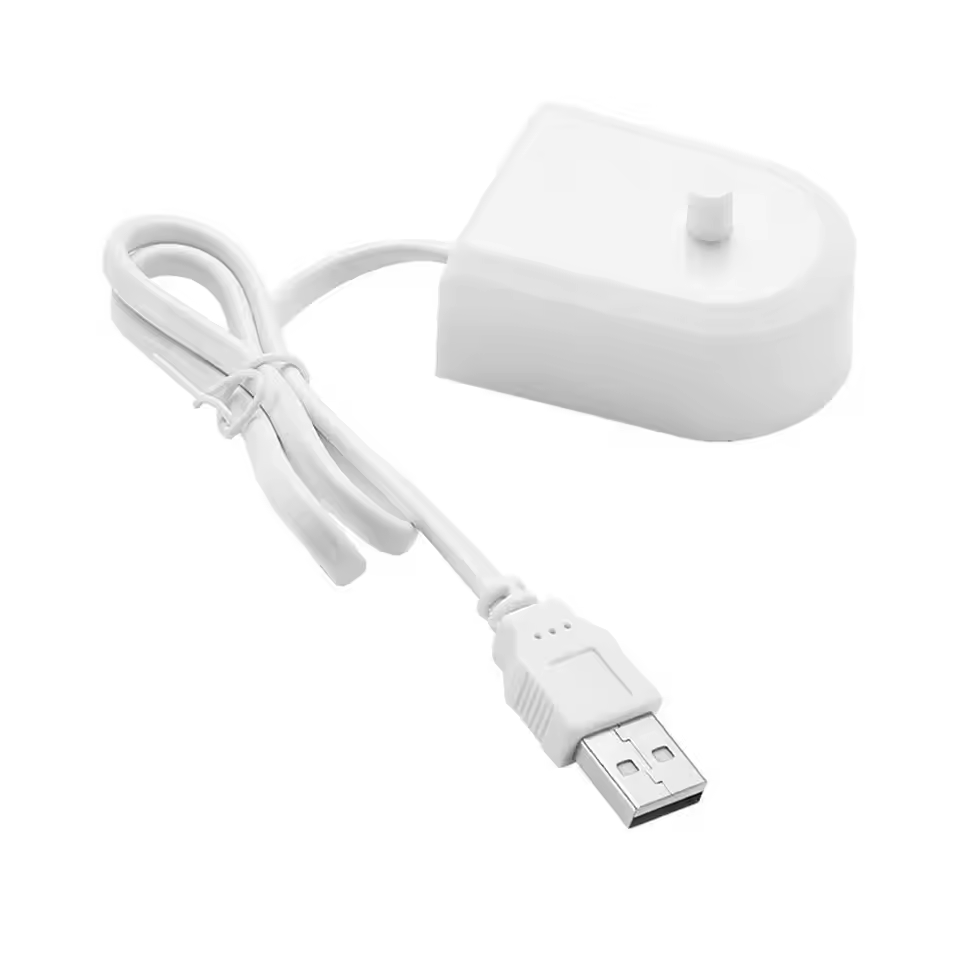
Identifying Charger Problems
Identifying issues with your electric toothbrush charger is the first step to resolving them. Here are common signs:
- No Power Transfer: If your toothbrush isn’t charging, check if the charger is plugged in.
- Overheating: A charger that feels unusually hot may be faulty or overused.
- Visible Damage: Damaged cables or ports can disrupt charging or pose safety risks.
- Fluctuating Charging: Inconsistent charging often points to compatibility or internal issues.
Inspect the charger, adapter, and toothbrush for signs of wear. Testing it with a different toothbrush can confirm if the charger is defective.
Types of Charger Failures
Electric toothbrush chargers fail for various reasons. Understanding these types can make replacement easier:
- Physical Damage: Broken cables, frayed wires, or melted ports are common issues.
- Internal Component Failure: Circuits may degrade or short-circuit over time.
- Compatibility Issues: Using a charger not designed for your toothbrush can lead to charging failure.
- Power Supply Problems: Faulty outlets or adapters can affect the charger’s performance.
When experiencing charger failure, verify the root cause. Replace the charger if repairs aren’t possible. Always choose compatible charging solutions to avoid future problems.
Types of Electric Toothbrush Chargers
Selecting the right electric toothbrush charger ensures compatibility and reliable performance. There are two common types available.
Brand-Specific Chargers
Brand-specific chargers are designed to match particular toothbrush models. Manufacturers create these chargers to work seamlessly with their products. These are often included with your toothbrush when purchased.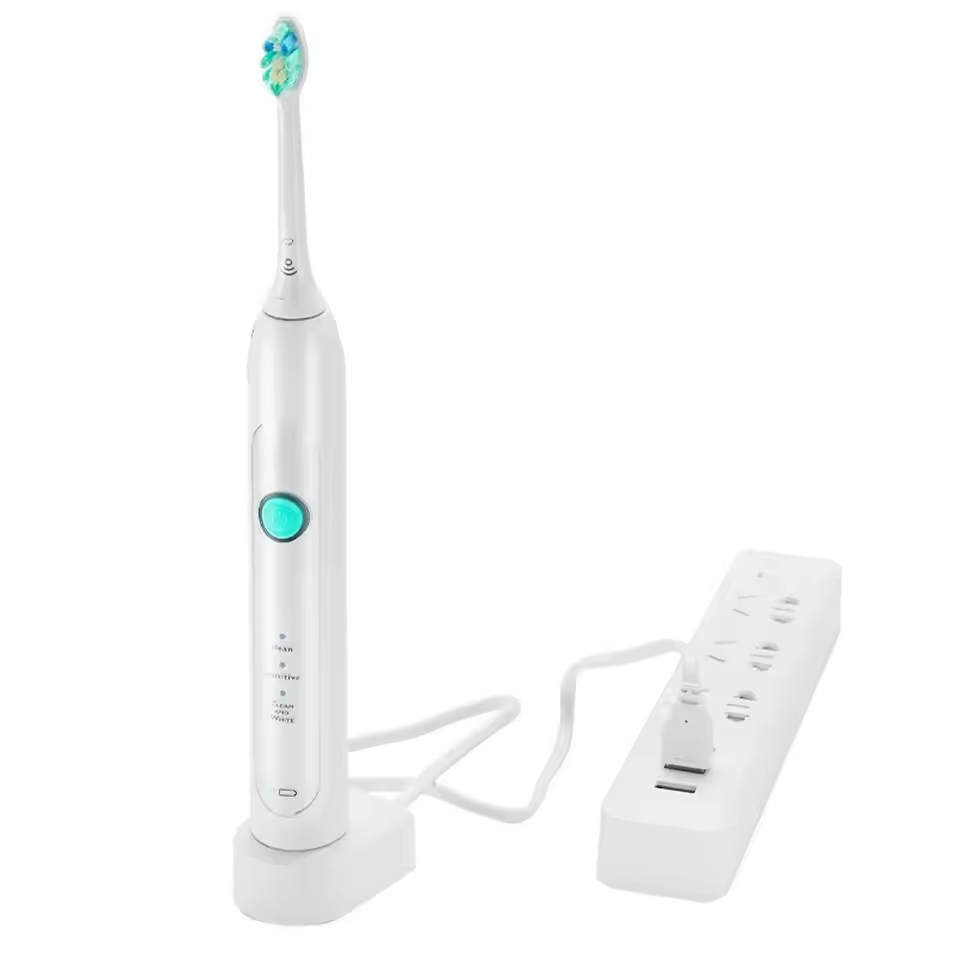
Key Features of Brand-Specific Chargers:
- Perfect Compatibility: They align with specific toothbrush designs for precise power delivery.
- Reliable Performance: Their components are optimized for long-term use with the brand’s products.
- Warranty Coverage: Many come with a brand guarantee for replacement if defective.
Considerations:
- Always check the model before replacing your charger.
- Buying directly from the brand avoids compatibility issues.
Universal Charging Options
Universal chargers are adaptable to multiple toothbrush models from different brands. They simplify charging when owning toothbrushes from various manufacturers.
Key Features of Universal Chargers:
- Versatility: They work with a wide range of electric toothbrushes.
- Cost-Effective: Universal chargers can be cheaper than brand-specific replacements.
- Easy Availability: They are often sold by third-party suppliers online or in retail stores.
Considerations:
- Check your toothbrush’s voltage requirements before purchase.
- Verify the charger’s compatibility list to ensure it supports your toothbrush.
Using the correct charger extends the life of your toothbrush and prevents unnecessary damage. Whether you choose a brand-specific charger or a universal option, prioritizing compatibility is key.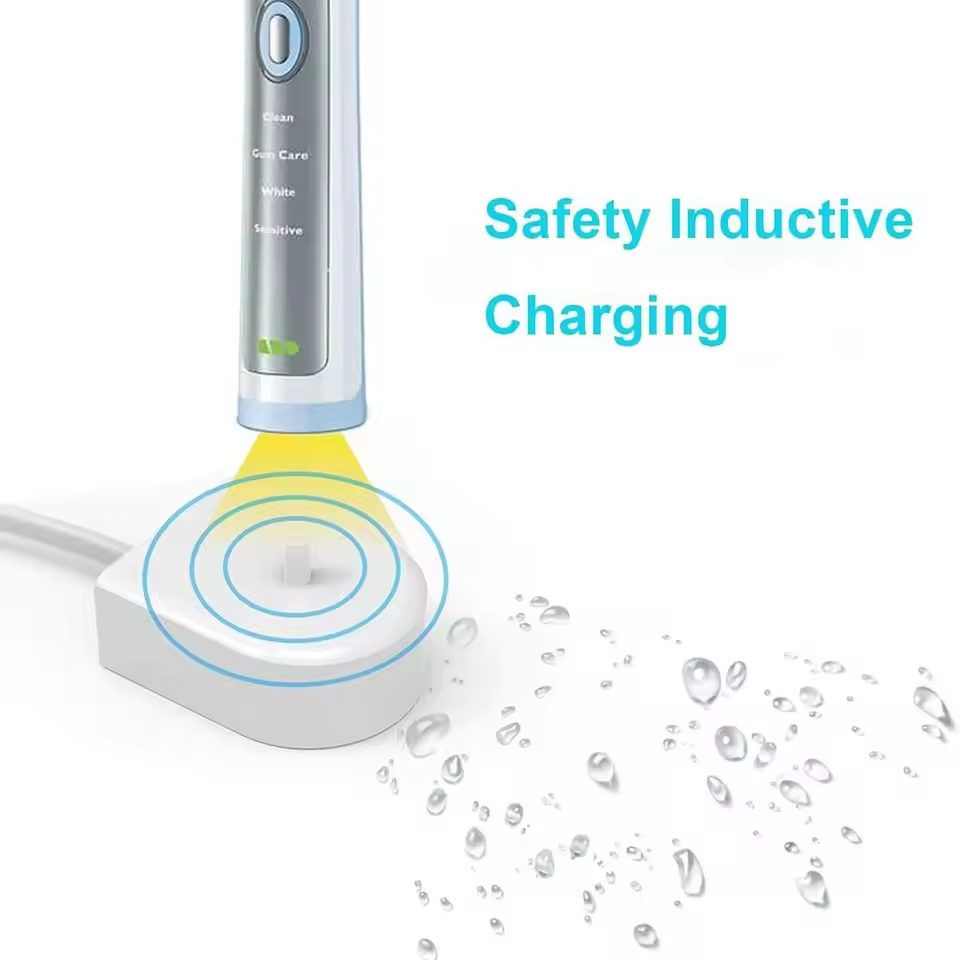
Steps to Check Your Electric Toothbrush Charger
Ensuring your electric toothbrush charger functions correctly requires a step-by-step check. Addressing issues early can prevent costly replacements. Follow these simple methods to inspect your charger efficiently.
Inspecting Cables and Ports
Cables and ports are vital for proper charging. Damages here can disrupt functionality. Here’s how to inspect them:
- Examine the Cable: Look for any frays, cuts, or exposed wires. Damaged cables may need replacement.
- Check the Plug: Inspect the plug for bending, corrosion, or melting signs.
- Inspect Ports: Look at the toothbrush and charger ports. Dirt or damage can affect power transfer.
- Clean Connection Points: Remove debris or dust using a soft cloth. Improved contact ensures better charging.
Carefully inspect these elements before assuming the charger has failed. Minor issues are often repairable.
Testing Charger Compatibility
Not all chargers fit every toothbrush. Ensuring compatibility saves time and avoids replacement errors. Test your charger’s compatibility as follows:
- Confirm Model: Check your toothbrush model number. Cross-check this with the charger specifications.
- Test with Another Device: Verify the charger on a compatible toothbrush. This helps identify specific problems.
- Check Voltage: Confirm the charger’s voltage matches your toothbrush’s requirements.
- Inspect Indicator Lights: Many chargers have lights to show connection. Test if the light turns on.
Testing compatibility ensures you avoid further damage to your toothbrush or charger. Always use approved chargers for optimal performance.
Finding a Replacement Charger
When your electric toothbrush charger needs replacement, finding the right option is crucial. Choosing a compatible charger ensures proper operation and avoids potential damage to your toothbrush.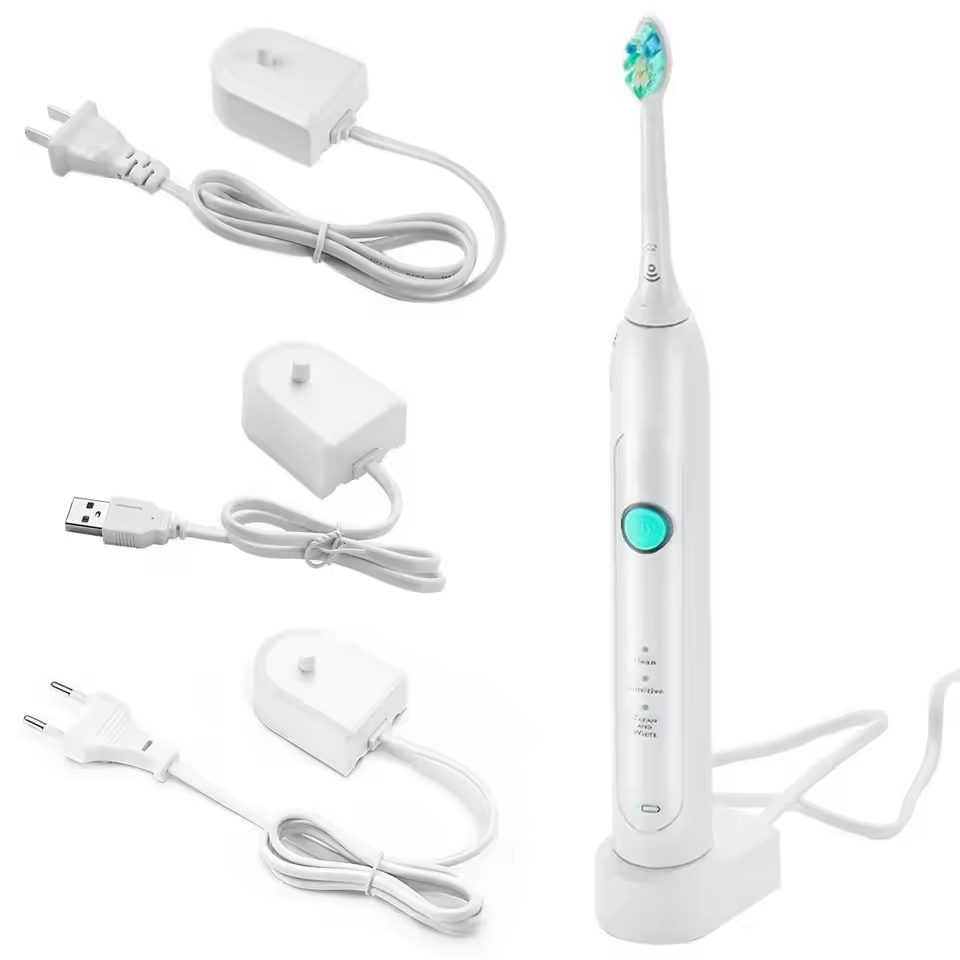
Official Brand Retailers
Official brand retailers are reliable sources for finding replacement chargers. They provide authentic and compatible chargers.
- Guaranteed Compatibility: Brand retailers ensure chargers match your toothbrush model perfectly. This eliminates compatibility concerns.
- Warranty Protection: Buying directly from the brand often includes warranty coverage for defects or issues.
- Trusted Quality: Official chargers are built to meet safety and performance standards.
Steps to Purchase:
- Visit the brand’s website or authorized stores.
- Check for your toothbrush model specifications.
- Confirm warranty and return policies before purchasing.
Brand-specific chargers are recommended for users prioritizing reliability and peace of mind.
Third-Party Suppliers
Third-party suppliers also offer electric toothbrush chargers, typically at a lower cost. They provide more variety and options.
- Affordable Prices: These suppliers offer cost-effective alternatives to brand-specific chargers.
- Wide Availability: Chargers from third parties are sold online and in retail stores worldwide.
- Versatile Options: Universal chargers can work with multiple toothbrush models.
Considerations:
- Check compatibility lists to ensure proper fit with your toothbrush.
- Verify voltage and specifications to avoid mismatched chargers.
- Read customer reviews to assess reliability and safety.
Universal chargers from third-party sources are ideal for users with multiple toothbrush brands. However, confirm compatibility and quality before buying.
Selecting the right replacement charger ensures safe and effective toothbrush use. Always prioritize compatibility and reliability to safeguard your investment.
How to Replace Your Electric Toothbrush Charger
Replacing your electric toothbrush charger requires care to ensure safety and functionality. Following the correct steps avoids equipment damage and ensures proper charging for your toothbrush. Below are crucial steps and guidelines to replace it effectively.
Safety Precautions Before Replacement
Safety should be your first priority when handling chargers. Improper handling can pose risks. Here are essential safety tips:
- Turn Off Power Supply: Always unplug the charger before attempting to replace it. This reduces electrical risks.
- Inspect Old Charger: Check for signs of damage like exposed wires or melted parts before touching it.
- Use Dry Hands: Never handle chargers with wet hands to avoid electrical shocks.
- Choose a Compatible Charger: Ensure the new charger meets the specifications of your toothbrush.
- Avoid Overloading Outlets: Use a single outlet for the replacement charger to prevent overheating.
Following these precautions ensures a secure and hassle-free replacement process.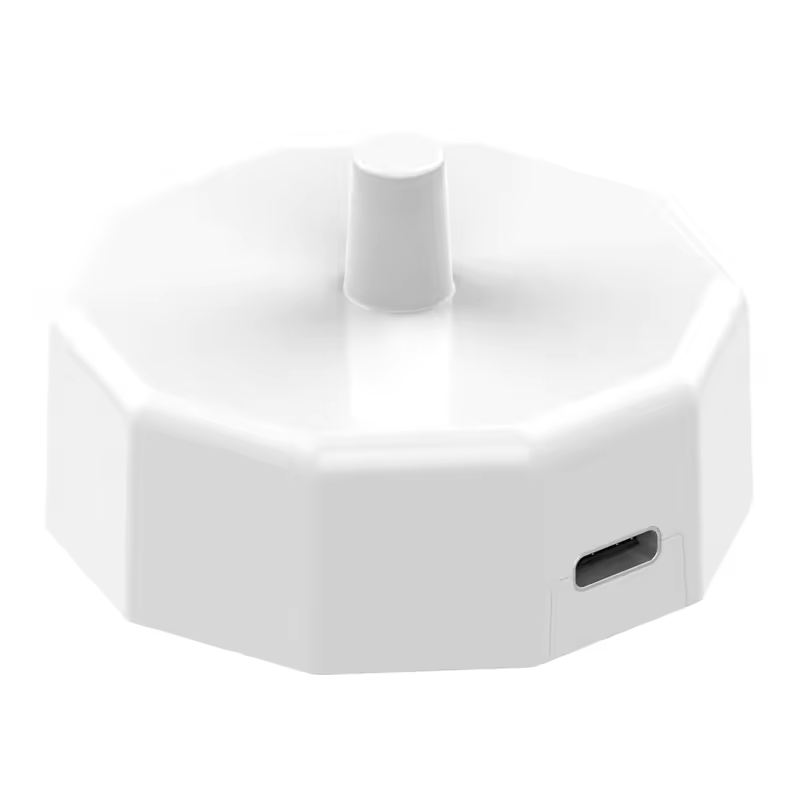
Proper Connection and Setup
After ensuring safety, it’s time to connect and set up your new charger properly. Follow these steps:
- Verify Charger Specifications: Confirm the new charger matches your toothbrush model and voltage requirements.
- Prepare a Clean Surface: Place your charger on a flat, dry surface to prevent it from slipping.
- Connect the Charger: Align the charging ports of the toothbrush and the charger carefully.
- Plug into Power Outlet: Insert the plug into a compatible outlet. Ensure the connection is secure.
- Check for Indicator Lights: Look for lights or signs on the toothbrush that show charging has started.
Proper setup ensures your toothbrush charges efficiently without damaging the charger or battery.
By following these guidelines, you can replace your electric toothbrush charger safely and effectively. Always prioritize compatible chargers and proper installation to maintain your toothbrush’s performance.
Tips for Maintaining Your Charger
Proper maintenance extends the lifespan of your electric toothbrush charger. Following these steps ensures optimum performance and avoids frequent replacements.
Preventing Wear and Tear
Taking precautions minimizes damage and keeps your charger working effectively. Here’s how:
- Avoid Bending Cables: Always keep charging cables straight to prevent wire fraying or internal damage.
- Unplug When Not In Use: Disconnect the charger when your toothbrush is fully charged to avoid overheating.
- Handle Carefully: Use gentle motions when connecting or disconnecting the charger. This reduces stress on delicate components.
- Protect From Damage: Keep the charger away from sharp objects or busy areas to prevent accidental cuts.
- Clean Regularly: Use a dry cloth to remove dust or debris from the charger and ports.
Simple preventive actions help maintain the charger’s functionality for years.
Storing Chargers Safely
Proper storage avoids damage and ensures the charger remains in good condition. Follow these storage tips:
- Choose a Dry Location: Keep the charger in a cool, moisture-free space to prevent rust or corrosion.
- Organize Cabling: Use cable ties or storage bags to avoid tangling and strain on wires.
- Keep Away From Heat: Store chargers away from direct sunlight or heating appliances to reduce overheating risks.
- Use Separate Compartments: Place your charger separately, avoiding contact with heavier objects that can crush it.
- Check Before Storage: Inspect the charger for damage before storing to ensure it remains functional.
Safe storage practices protect your charger, ensuring longer usability and better performance.
FAQs on Electric Toothbrush Charger Replacement
Replacing an electric toothbrush charger might come with questions. Below are answers to common concerns.
Common Customer Queries
Customers often have questions about their electric toothbrush chargers. Here are frequent queries:
- Can I use any charger for my toothbrush?
- No, always use a compatible charger that matches your toothbrush model.
- How do I know my charger needs replacement?
- Signs include no power transfer, overheating, or damaged cables and ports.
- Where can I buy chargers for my toothbrush?
- Purchase chargers from official brand retailers or trusted third-party suppliers.
- Why doesn’t my toothbrush charge with a universal charger?
- Voltage or compatibility issues may prevent universal chargers from working.
- Is it safe to keep my charger plugged in all the time?
- No, unplug chargers to avoid overheating and reduce electricity usage.
Solutions to Frequent Issues
Troubleshooting common electric toothbrush charger problems saves time and money. Try these solutions:
- Faulty cables or ports:
- Inspect cables and ports for damage. Replace broken ones promptly.
- Charger not working:
- Test with another toothbrush or adapter to check if the issue is with the charger.
- Compatibility concerns:
- Ensure your charger matches your toothbrush model and voltage specifications.
- Overheating charger:
- Allow the charger to cool. Avoid continuous use or storing in hot spaces.
- Charging fluctuations:
- Confirm the outlet is functional and use chargers recommended by the toothbrush brand.
Understanding charger issues and solutions ensures proper functionality of your electric toothbrush while preventing damage.
